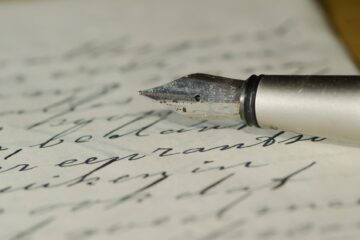![]()
Introduction
Standards for forensic psychophysiological deception detection (PDD) cover the use of polygraphs during investigations. The collection as a whole serves as a standard reference for the use of polygraphs, starting with the standardization of terminology related to forensic psychophysiology. The standards then address both the technology and the examiner’s procedures. In terms of technology, the standards cover operating systems, sensors, instrumentation, calibration, and functionality tests. In addition to addressing best practices for interpretation and conducting research, criteria for the examiner also specify ethical obligations and continuous education needs. Polygraph is a tool for capturing autonomic nervous system responses in people. The detection of deception has long relied on physiological indicators. The same fundamental idea underlies polygraphy: Deception is connected to physiological change. The polygraph is a tool for capturing reactions from the autonomic nervous system in people.
History
The majority of the elaborate lie detecting techniques used in earlier times involved torture. For instance, in the middle Ages, it was believed that honest individuals could withstand boiling water better than liars, therefore it was used to identify liars. Early lie detectors included a 1904 device by Vittorio Benussi to measure breathing, an 1895 invention by Cesare Lombroso to measure changes in blood pressure for police cases, a 1906 invention by James Mackenzie (a cardiologist), the Mackenzie-Lewis Polygraph, and an abandoned project by American William Moulton Marston to use blood pressure to examine German POWs. Systolic blood pressure and lying appeared to be strongly positively correlated, according to Marston’s machine[1]. John Augustus Larson of the University of California created a gadget in 1921, and the Berkeley Police Department, led by its internationally famous police chief August Vollmer[2], used it for the first time in law enforcement activity. Leonarde Keeler continued to develop on this device. As Larson’s heir apparent, Keeler modified the instrument in 1939 by making it portable and adding the galvanic skin response. The FBI later bought his gadget, which became the basis for the contemporary polygraph. The Berkeley Psychograph, a blood pressure-pulse-respiration recorder created by C. D. Lee in 1936, and the Darrow Behavior Research Photopolygraph, which was created and used only for behavioral research investigations, were two devices that were comparable to Keeler’s polygraph version.
John E. Reid created a system in 1945 that recorded the muscle activity that accompanied changes in blood pressure. Reid believed that by making these recordings concurrently with standard blood pressure-pulse-respiration records, better accuracy could be achieved[3]
Techniques
There are primarily two kinds of polygraph exams:
Comparison Questions Test
A kind of polygraph exam that contains inquiries unrelated to the crime, inquiries pertinent to the crime under investigation, and inquiries comparing the subject’s honesty and background to the incident under investigation
A pretest interview is typically conducted as part of the CQT, which is then followed by a series of questions given while the suspect’s physiological responses are being monitored (usually three separate question sequences are asked). After scoring the charts, the polygraph examiner concludes the CQT with a post-test interview when the test results are addressed. The pretest interview is a crucial part of this method. The polygraph examiner creates comparison questions during the pretest interview while also learning more about the suspect’s past and making an effort to persuade the suspect of the validity of the polygraph test.
The next ten questions are asked by the examiner, and they can only be answered “yes” or “no.” There are three different kinds of queries. The baseline includes irrelevant inquiries such as “Is your name Neha?” on the respondent’s identity or related questions.
Questions that are pertinent and compare prove guilt or innocence.
Relevant inquiries centre on the crime under investigation, such as Did you stab your ex-wife on July 12? All respondents are intended to feel emotionally stimulated by probable-lie comparison questions (control questions), which often centre on the respondent’s honesty and background history before the incident under investigation.
By comparing responses to the pertinent and comparison questions, polygraph examiners believe they may identify deceit. It is believed that suspects will respond more strongly to pertinent inquiries than to comparison queries. On the other hand, it is expected that innocent suspects will respond more to comparison questions than to pertinent questions. These presumptions are justified by the idea that since innocent persons are aware they are telling the truth regarding the pertinent subject, they would respond more forcefully to inquiries about their character and background in general.
Concealed Information Test
A type of polygraph test used to ascertain whether a subject is aware of specifics regarding a crime
Instead of evaluating deception, the CIT looks to see if the suspect is aware of information about a crime that only the perpetrator would be aware of. A sequence of multiple-choice questions make up the CIT’s standard format. Each question has one correct answer (commonly referred to as the key answer) and four erroneous but possible alternatives known as foils. The assumption is that the guilty suspect will react physiologically more strongly to the right answer than to the wrong one. Conversely, an innocent person who is unaware of the specifics of the crime will have the same physiological reaction to each possibility.
The CIT is based on the idea that people will react more strongly to information they see as distinctive or important than to information they perceive as unimportant.
Accuracy
The majority of criminals (84–92%) are accurately identified as guilty; however, the situation for innocent suspects is less promising, with accuracy rates ranging from 55–78%. Numerous innocent suspects were categorised as having inconclusive evidence. Between 9% and 24% of innocent suspects were wrongfully found to be guilty. A significant false positive rate suggests that the CQT’s premise may not apply to all suspects and that innocent people respond more favourably to pertinent than comparison questions.
Falsely identifying guilty suspects as innocent appears to be a risk with the CIT, but false positive mistakes are a risk with the CQT (falsely classifying innocent suspects as guilty)
There have been several proposed defence strategies aimed at surviving polygraph examinations. There are two main categories of countermeasures: “general state,” which aims to change the subject’s physiological or psychological state throughout the test; and “specific point,” which aims to change the subject’s state at particular points during the test in order to either increase or decrease responses during crucial test intervals.
The Supreme Court of Canada held in R. v. Beland (1957)[4] that polygraph results should not be entered as evidence to help assess whether a person is telling the truth. The jury gave polygraph evidence more weight than it deserved while deciding the verdict because the court claimed that the polygraph was wrongly endowed with the “mystique of science.”
Application in India
The Brain Electrical Oscillation Signature Profiling test was used by an Indian court in 2008 to convict a woman who had been charged with killing her fiancé. The results of the polygraph were presented as evidence in court for the first time. On May 5, 2010, the Supreme Court of India ruled that using polygraph, brain mapping, and narcoanalysis on suspects was unconstitutional and illegal if agreement was not obtained freely. In accordance with Article 20(3) of the Indian Constitution, no one accused of a crime may be forced to testify against himself. If the defendant desires one, polygraph tests are still permitted.
Conclusion
The use of polygraphs in investigations is covered by standards for forensic psychophysiological deception detection (PDD). Starting with the standardization of terminology relevant to forensic psychophysiology, the collection as a whole serves as a standard reference for the use of polygraphs. A polygraph, often known as a lie detector test, is a tool or process that monitors and records multiple physiological indications as a person is asked and responds to a series of questions, including blood pressure, pulse, breathing, and skin conductivity. In certain nations, candidates for important public or commercial sector jobs or criminal suspects are interrogated using polygraphs. Although the effectiveness of polygraphs is a topic of some debate in the scientific community, assessments of polygraphy by academic and governmental bodies generally indicate that polygraphs are unreliable, susceptible to manipulation, and an ineffective or invalid method of determining truthfulness. Polygraph tests are permitted in India. A comparison questions test is a type of polygraph examination that includes questions about subjects’ honesty and backgrounds as well as questions about crimes that are unrelated to the one being investigated. Contrarily, a polygraph test known as a “concealed information test” is used to determine whether a person is aware of specifics related to a crime.
References:
[1] Lewis, J. A.,Cuppari, M. (2009), the polygraph: The truth lies within, Journal of Psychiatry and Law, 37 (1): 85–92.
[2] Katherine To, Lie Detection: The Science and Development of the Polygraph, Illumin magazine, Issue 1,volumne 5,dec. 6,2002, https://illumin.usc.edu/lie-detection-the-science-and-development-of-the-polygraph/.
[3] Reid, J. E, Simulated Blood Pressure Responses in Lie-Detection Tests and a Method for Their Deception, Journal of Criminal Law and Criminology, 36 (1): 201–215.
[4] R v. Béland [1987] 2 S.C.R. 398 (Canada).



0 Comments